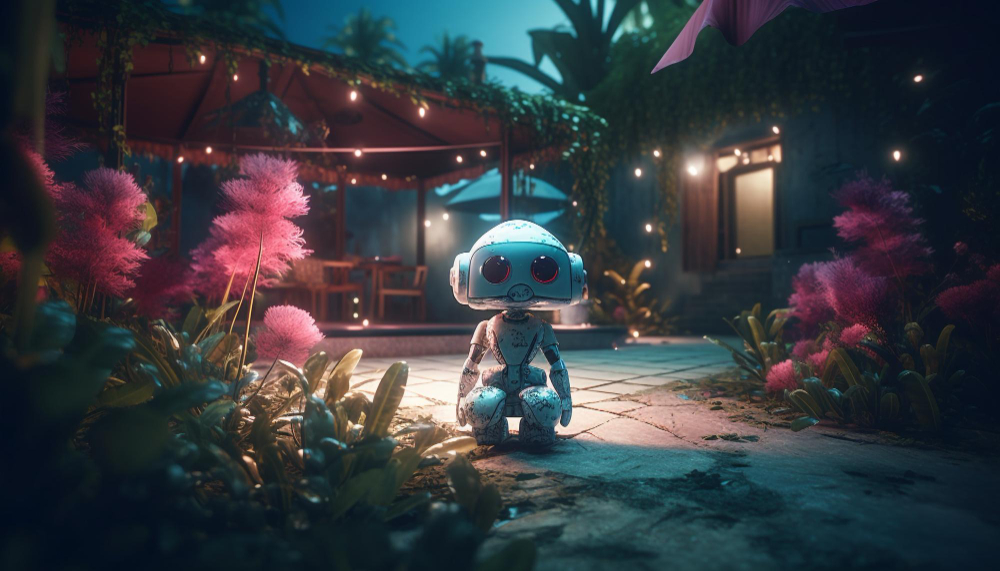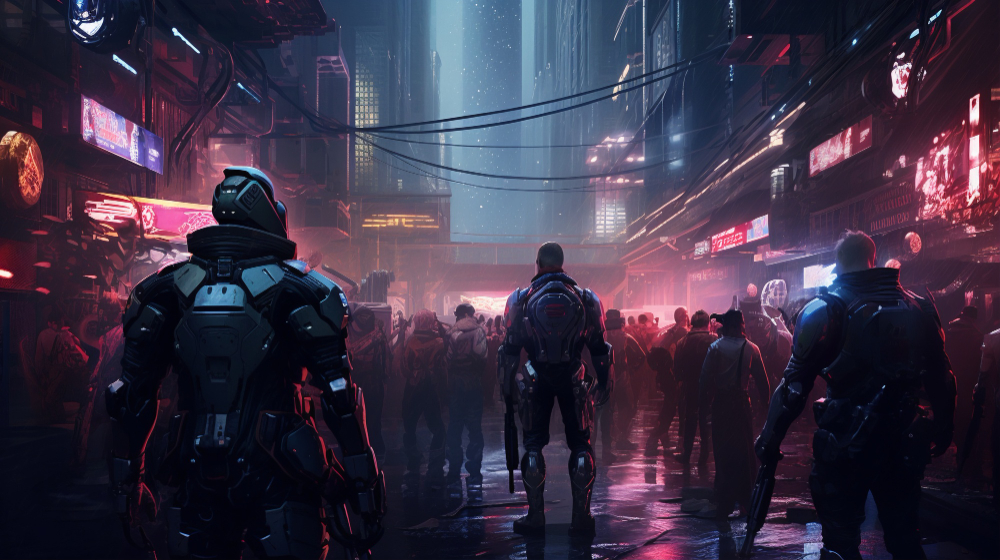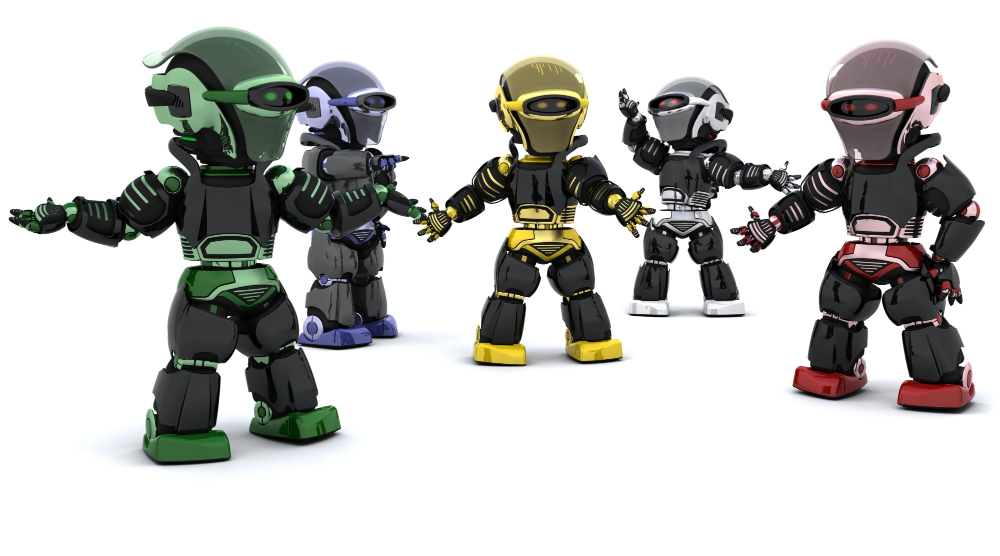In the world of video games, everyone – both the game developers and the players – wants the best experience possible. Modern technology has made games appear and feel more realistic than ever, especially with regard to the incredibly lifelike photorealistic 3D characters. Because of the amazing attention to detail in their creation, these characters almost appear actual. This adds excitement and emotion to games in addition to making them seem better. Players experience a sense of immersion in the game’s narrative as the characters exhibit emotional responses. Future gaming experiences are expected to be even more incredible and immersive as imagination and technology continue to advance, making games increasingly realistic to the point where it’s difficult to distinguish between virtual and real life.
So read this blog to understand what photorealistic 3D characters are and what benefits they can offer to the world of gaming.
Defining Photorealistic 3D Characters
Super-detailed digital characters with an exceedingly lifelike appearance are similar to photorealistic 3D characters. Consider them as computer-generated images of people or objects that have the appearance of real photographs. These characters have been painstakingly generated, from their appearance to the way light and shadow interact with their virtual surfaces, utilizing sophisticated computer techniques. The idea is to make them appear so lifelike that it will be difficult to distinguish them from real photographs. In order to provide us a more realistic and immersive experience, these figures are utilized in animations, virtual experiences, and video games to create a realistic and lifelike appearance.
With the advent of online 3D model makers and online 3D character generators like 3Daily the development of photorealistic characters have become a lot easier. These 3D character makers now use AI to get the best result possible in just a matter of time. So, leave it to the online model makers and character generators to create photorealistic characters for your game.

The Artistry Behind Photorealistic Characters
Creating photorealistic characters is like a high-tech art form where skilled 3D model makers play a key role. These artists use special computer programs to carefully design digital characters that look almost like real people or things. It’s not just about making them look real, but also about understanding how light falls on them and how their features come to life. These artists pay super close attention to every detail – the way a character’s face looks, how their body is shaped, and even the textures that cover them. It’s not just a technical skill; it’s also about having a deep sense of how things look and feel in the real world.
Let’s break down the creative journey in simpler terms:
1. 3D Modeling – Digital Sculpting:
Consider 3D modeling to be like molding digital clay. The character’s body and face are created by artists using specialized computer programmes, who pay rigorous attention to even the smallest components. It’s similar to making a digital sculpture of a human, but instead of using messy clay, there are loads of icons and tools.
2. Textures and Materials – Adding the Finishing Touches:
After defining the basic shape, the next step is to infuse the character with captivating details that bring it to life. Think of it as dressing up a paper doll, but with a cutting-edge twist. Artists employ intricate textures – essentially highly detailed images – to simulate realistic skin, hair, eyes, and clothing. It’s akin to carefully selecting the perfect outfit to ensure the character looks absolutely spot-on and convincingly real.
3. Advanced Rendering – Lights and Shadows:
Consider rendering as the art of capturing the ideal lighting for a photograph. To ensure that the lighting in the virtual world accurately captures the subtleties of real-life lighting, artists utilize specialized approaches. This meticulous process results in the character having natural reflections, shadows, and other intricate details that seamlessly integrate them into the game world. This ensures that the character looks absolutely fantastic in every scene and in every action in the gaming world.
4. Animating – Bringing the Character to Life:
Animating is the magic that makes digital characters move and feel real. Skilled animators take detailed 3D models and bring them to life—making them run, talk, and show emotions. Using special software, they create a series of frames that, when played quickly, give the illusion of motion. This turns our characters into dynamic beings, adding realism and excitement to games, movies, and digital adventures. It’s the heartbeat that transforms a well-crafted character into an immersive experience.
5. Fine-Tuning – Perfecting the Details:
Fine-tuning is the meticulous process of perfecting the details in our digital creations. Skilled artists and developers focus on refining every aspect, ensuring flawless movements, expressions, and textures. It’s like putting the finishing touches on a masterpiece, elevating the overall quality and making characters appear polished and lifelike. This stage showcases the artistry and precision of the digital craft, resulting in characters that captivate with impeccable presentation and attention to detail.
In the end, all these steps come together to create a photorealistic 3D character – a digital buddy in the game that looks so real, you might almost expect them to step out of the screen. It’s a bit like crafting a virtual work of art, where every detail is carefully crafted to make the character feel like a part of your gaming adventure.

Advantages of Photorealistic 3D Characters in Gaming:
The integration of photorealistic 3D characters offers several advantages, enhancing the overall gaming experience. These characters bring game worlds to life with a level of visual fidelity that immerses players in virtual realms. Moreover, the emotional connection evoked by realistic characters fosters a more engaging and memorable gaming experience. Here are a few advantages of using Photorealistic 3D characters in gaming:
1. Emotional Connection and Investment:
Firstly, realistic characters can evoke emotional responses, allowing players to empathize and become emotionally invested in their stories. This connection drives deeper engagement with the game’s narrative, making decisions and actions feel more impactful. The use of photorealistic 3D characters also enables nuanced storytelling, exploring a wider range of emotions and themes. As a result, Photorealistic 3D characters contribute to a heightened level of player engagement. The visual appeal and lifelike qualities of these characters encourage players to invest more time in exploring the game world, uncovering hidden details, and immersing themselves in the narrative.
2. Immersive Graphics and Visual Revolution:
Secondly, lifelike characters are crucial to creating an incredible gaming world in video games. Due to cutting-edge technologies like ray tracing, which gives the game’s lighting, reflections, and shadows an impressively realistic appearance, they appear so real. This visual enhancement is comparable to a significant shift that brings the virtual world closer to reality. As a result, playing fosters a unique sense of immersion that forges a bond between the player and the virtual environment. It’s like entering a completely different reality and losing yourself in the journey.
3. Customization and Player Satisfaction:
The concept of customizable avatars adds depth to the gaming experience, allowing players to create unique representations within the game world. Beyond aesthetics, customization extends to gameplay choices, fostering a sense of agency and identity. Customizing avatars through photorealistic 3D characters profoundly impacts player satisfaction. Tailoring characters to personal preferences enhances the sense of agency, allowing players to shape their gaming experience according to their desires. This connection leads to greater enjoyment and a more immersive virtual adventure. Most online 3D character makers allow customization to suit the preferences better. This helps the developer to integrate their vision properly in the game development procedure.
4. Realism in Social Interaction and Fan Engagement :
The inclusion of photorealistic 3D characters extends beyond the solo gaming experience. In multiplayer and online gaming, realistic avatars facilitate more meaningful social interactions. Players can experience a deeper connection with others, as the visual fidelity of characters allows for non-verbal communication through lifelike gestures and expressions.
Moreover, Photorealistic characters can become iconic figures within gaming communities. Fan engagement is heightened as players discuss and share experiences related to these characters. This sense of community fosters a passionate player base and encourages ongoing interest in the game.
5. Accessibility and Inclusivity:
The detailed design of photorealistic characters can enhance accessibility features in games. Facial expressions and gestures, crucial for understanding the storyline, can be especially beneficial for players with hearing impairments. Additionally, customizable avatars allow players to tailor their gaming experience based on individual needs and preferences.
Additionally, the ability to create diverse and photorealistic characters promotes inclusivity in gaming. Players from various backgrounds can see themselves represented in the virtual world, fostering a sense of belonging and ensuring that gaming experiences are reflective of the global player base.
6. Evolution of Non-Player Characters (NPCs):
The emergence of highly lifelike 3D characters has revolutionized the way non-player characters (NPCs) are portrayed in video games. The lifelike appearance and realistic actions of these NPCs add an additional layer of excitement and immersion to the game world. The interaction between players and these characters is analogous to conversing with actual people, which adds authenticity and dynamic quality to the game narrative. The development of NPCs into more lifelike entities has enhanced the whole gaming experience by transforming virtual environments into engrossing and plausible adventures, in addition to altering the visual aspect of games.
7. Educational and Training Applications:
Not only are the lifelike characteristics of photorealistic 3D characters entertaining, but they are also very helpful in educational settings. These figures provide realism to practice simulations and educational games. Gamers learn and practice in a more genuine way by participating in scenarios that have the appearance and feel of the real world. It’s similar to turning learning into a thrilling journey where you can hone your abilities by engaging in seemingly real-world activities. In this sense, the characters not only impart knowledge but also make it more captivating and unforgettable.
8. Marketing and Branding Opportunities:
Photorealistic 3D characters aren’t limited to video games; they are also very significant for brand promotion and development. Games that employ these incredibly lifelike creatures can create visually striking advertisements and other promotional materials that increase viewership. This piques people’s curiosity and creates a lasting impression in the minds of those who might wish to participate. It’s as if the trendy game characters are transformed into stars that shine outside of the gaming screen, enticing everyone to join in the experience. Due to this relationship between the game and its marketing, players are drawn in and the game itself becomes more of an event that they want to be a part of.

Conclusion
In conclusion, the incorporation of lifelike 3D characters into games has altered the way we think of and enjoyment from gaming. Technology and talented artists combine to create realistic-looking characters that infuse the games with enthusiasm and feeling. Not only are these characters entertaining, but they also aid in education, training, and even business promotion. The future of gaming appears even more exciting as technology advances, blurring the distinction between virtual and actual worlds. Accepting these incredibly lifelike characters therefore does more than just improve the visual appeal of games. It also creates fresh opportunities for us to engage, learn, and play in the fascinating world of gaming. So, join the journey with 3Daily today and explore the possibilities of photorealistic 3D characters.



